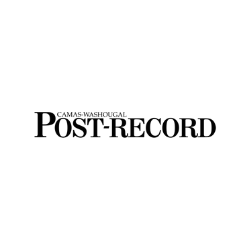The Washougal School District is projecting an enrollment of 2,992 students for the upcoming school year, 214 more than it had at the end the 2020-21 school year.
District financial manager Kris Grindy revealed the projection as part of a presentation of the district’s 2021-22 budget, which was subsequently adopted by the Washougal School Board, during an Aug. 24 meeting.
“As we reopen this fall for five-days-per-week in-person (learning), we have a number of families who have re-enrolled, and we are hoping that trend continues so we can continue to serve students and their families,” Les Brown, the district’s director of communication and technology, told the Post-Record.
The $52 million budget includes investments in accelerated programming, modern curriculums, career and technical education, fine arts, the district’s one-to-one technology initiative, staff development, facility maintenance, enhanced summer learning opportunities, outreach to Spanish-speaking families, free Advanced Placement and SAT exams for all students, and free meals for students.
“We have figured out how to make sure that we’re not skipping out on student achievement, (become) fiscally resilient and resolve those issues that have been present to keep moving forward with an eye on the prize that all of our children are going to rise,” district Superintendent Mary Templeton said during the Aug. 24 meeting. “We feel pretty solid about where we’ve been and where we’re headed.”
The district hopes that some of those programs can re-attract some of the learners it lost in the past two years. The district concluded the 2020-21 school year with 2,778 students, a decrease of about 250 from the 2019-20 school year.
“We are optimistic that our district’s resources and investments in student programs will have a positive impact on enrollment,” Grindy said. “Enrollment (projection data) has a four-year trend that includes birth rate analysis which will be reviewed over time. But the trend does not consider the Washougal School District’s ability to re-attract students that are currently opting out of our district for other opportunities like home-schooling or transferring into other districts.”
“Although our enrollment is below where it was two years ago, we are focused on investing in programs and support (systems) for students that will help us re-attract students and ensure students accelerate their learning,” Brown added. “The Elementary and Secondary Schools Relief funding (that we received) is allowing us to launch new programs like dual language and transitional kindergarten, and to expand student learning opportunities that will help us close any educational learning gaps as we return to in-person learning five days per week.”
Despite its optimism, the district is “being conservative” with its enrollment forecasting, according to Brown.
“For budgeting purposes, we haven’t factored in additional students who may join the district due to our dual language program and addition of transitional kindergarten,” he said. “We also have more flexibility to enroll students in the Washougal Learning Academy this coming school year since we have been granted approval for WLA as a multi-district online provider that allows us to serve families across Washington state, and we believe this can help us attract other students to our great program. This conservative approach to budgeting lets us make adjustments as we start the school year and have a firm number of students to staff.”
The district is budgeting for 175 teachers, down from 180 in 2020-21, and 157 full time equivalent classified staff members, up from the 146 in 2020-21, adding employees for its dual language, transitional kindergarten and Washougal Learning Academy programs, as well as health room aides to support its COVID-19 protocols.
“While the district’s student enrollment projection for the fall of 2020 was based on a conservative model, the fully-remote opening to school that year resulted in an even lower enrollment than we projected. We have adjusted certificated staffing to match our student number projection for this year,” Brown said. “All of the classified staff who were furloughed in 2020 were offered equivalent positions as we moved through our phases of reopening during the fall and winter of last school year.”
Grindy said that the district “will achieve budget stabilization and become fiscally resilient” during the next four years by “adjusting the budget plan to current funding models and anticipating enrollment trends.” She noted that the district is anticipating a larger incoming kindergarten class for this school year “which will impact our K-3 funding over the next four years.”
“We don’t plan the budget. Rather, we budget the plan,” she said. “We’re attracting, retaining and training our workforce. We’re preparing each and every child to receive a first-class ticket to their future by providing innovative, creative learning experiences that provide the best start to their post-high school (lives). We are evaluating our student data, monitoring our resources for efficiencies and creating a culture of high accountability. When our investments do not promote the desired outcome, we adjust and reevaluate.”
Templeton praised Grindy’s efforts to help the district maintain financial solvency during the past several years, which have presented significant funding-related challenges to school districts across Washington state.
“When Kris joined the organization, she (possessed) a high skill set around accounting and fiscal management,” she said. “But she said to me, ‘I want to be part of leading a school district,’ and I said, ‘Yes, that resonates with us,’ because this district needs every single person — community members, parents, staff and leaders — to be mission driven, making sure we continue (to ensure) that every child will be successful. Kris has positioned us from a fiscal perspective to reach that goal.”
